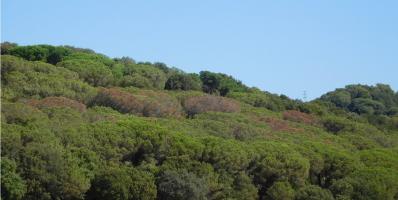Kate Johnson
As a Marie Skłodowska-Curie postdoctoral researcher at CREAF (commenced September 2024) I research how variation in plant physiological traits (including xylem embolism and traits related to leaf water loss (gmin and TLP)) may be related to the ability of plants to survive drought, in conjunction with Prof. Jordi Martínez Vilalta and Prof. Eva Castells Cabell.
In 2022 I was a Fulbright postdoctoral fellow at the school of Organismic and Evolutionary Biology at Harvard University (USA), and the School of the Environment at Yale University (USA). During this fellowship I studied how freezing damages young leaves and how anatomy drives the spread of xylem embolism during drought.
As a postdoctoral researcher at the Plant Ecology Research laboratory at the Swiss Federal Institute for Forest, Snow and Landscape Research (Switzerland) from July 2023 – August 2024, I focussed on how long-term acclimation to heat and drought influences the tolerances of trees to these stressors.
Prior to this I completed by undergraduate and postgraduate studies at the University of Tasmania (Australia). My PhD thesis entitled ‘Come with me on journey through Xylem and Space’ investigated how air (xylem embolism) spreads through trees at multiple scales using both optical cameras and X-rays (MicroCT).
I am also deeply interested in science communication and the connection between science and art. I co-manage a volunteer-run, award winning podcast and science communication platform: ‘That’s What I Call Science’, collaborate with artists, and love painting and writing poetry.





